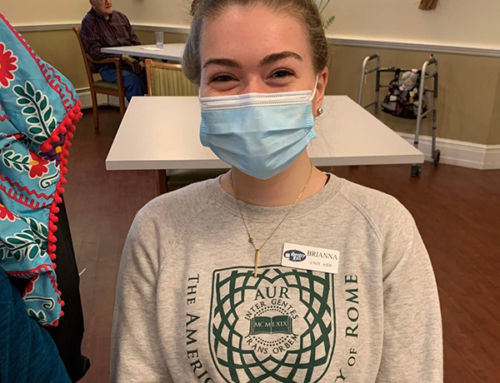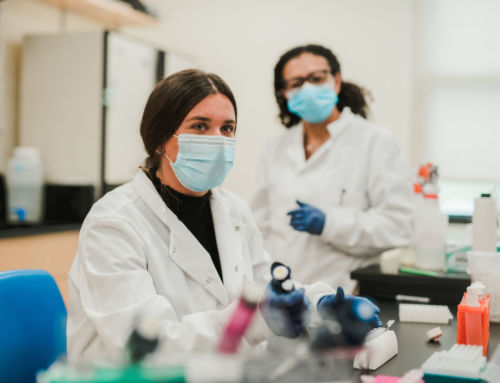With funding from the Department of Justice, Saint Joseph’s College invests in preventative strategies
by Patricia Erikson
"Writing about solutions, especially prevention strategies, can help shift perceptions of sexual violence as being the result of risky or random inevitabilities to a focus on rates, prevention, and causes of violence.” - National Sexual Violence Resource Center
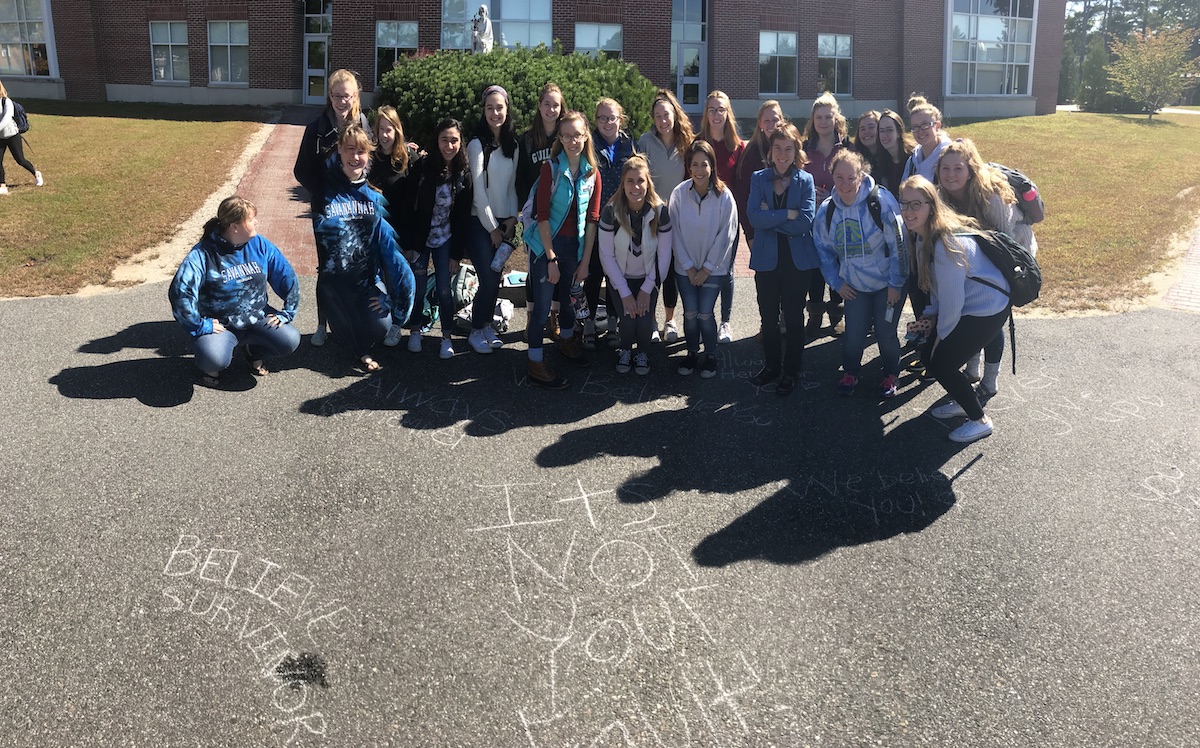
A group of students chose to walk out of class this fall as a form of protest to call attention to the widespread nature of sexual violence. They shared some of their thoughts about the decision to walk out. Megan Lenihan ‘22 said, “Sexual violence is an issue that needs attention. I have grown up in a world where parents teach their daughters to never walk alone late at night, don’t accept drinks from strangers, and always tell someone when you go on a date and where you are going. I’ve seen boys taught that they are too strong to be victims. We can’t let this issue become normalized or for people to become desensitized to it.” Katerina Britton ‘21 said, “I think violence—whether it be gender, physical, mental, etc.—should be something to be aware of in our community. When I went to high school a lot of students didn’t feel comfortable reaching out for help; they thought it was stupid or immature. I want to be an advocate for the mental health.”
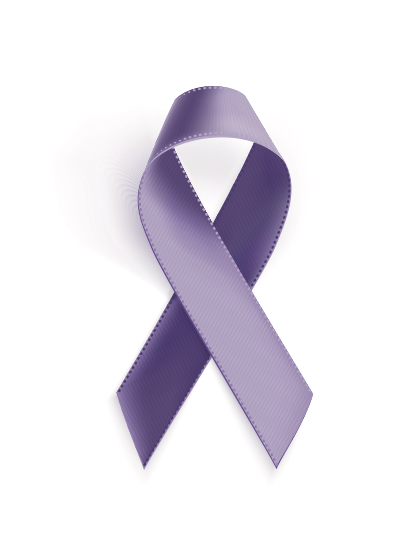
Domestic Violence Awareness Ribbon
National statistics gathered by the Centers for Disease Control and Prevention demonstrate that in the United States one in five women (19.1% or an estimated 23 million women) experienced completed or attempted rape at some point in their lives. One in three women (36.3%) experienced some form of contact sexual violence during their lifetime. Men are not immune from this violence; although at a dramatically lower rate—1 in 17—men experienced completed or attempted rape in their lifetime.1 Yet, nationally, rape is the most under-reported crime; studies show that a whopping 63% of rapes go unreported to police.2 For many years, Saint Joseph’s College has incorporated sexual violence prevention programming into the onboarding of new students and new employees. The athletics program has followed NCAA’s prevention protocol. And yet, even a small, rural college with a tight-knit community and a strong social justice ethos like Saint Joseph’s experiences cases of sexual misconduct3, albeit at lower rates than other campuses. Between 2014 and 2017, five cases of forcible rape were reported at Saint Joseph’s College.4
For Saint Joseph’s College–a Sisters of Mercy institution with a commitment to nonviolence–the imperative to address this national social epidemic proactively is clear, not only to benefit the safety of the community now, but also to prepare our graduates to make positive contributions to society at large as they disperse after graduation (see story p. 22 and sidebar p. 25). “We’re not satisfied with the results of our current prevention efforts. Our mission calls for the creation of a safe and just place for all. We need to do more,” said President James Dlugos.
Now, with the assistance of significant federal funding, the College is stepping up its preventative programming.
This year, the United States Department of Justice’s Office on Violence Against Women awarded Saint Joseph’s College a three-year $299,884 grant to fund programming that enhances prevention of, awareness of, and response to a range of sexual misconduct that can occur in the community, including: sexual assault, domestic violence, dating violence, or stalking.
“We have been given an extraordinary opportunity to address such an important issue,” said Dr. Matthew Goodwin, Dean of Campus Life and Title IX Officer. “Educating, training, and empowering students, faculty, and staff to ultimately end sexual violence and harassment is not only the intent of the grant, it’s also a moral responsibility connected to our College’s spiritual identity.”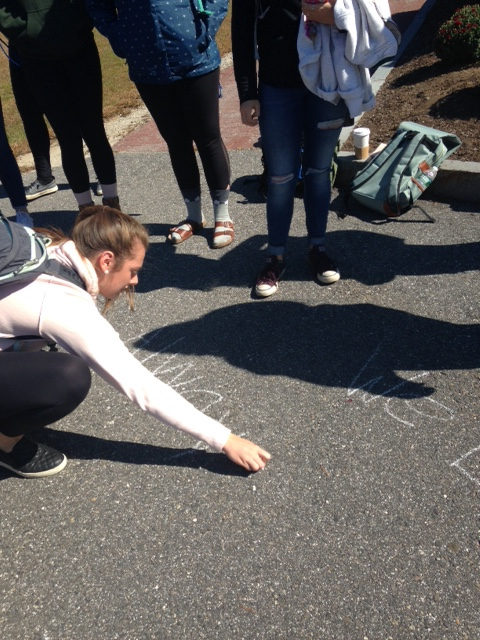
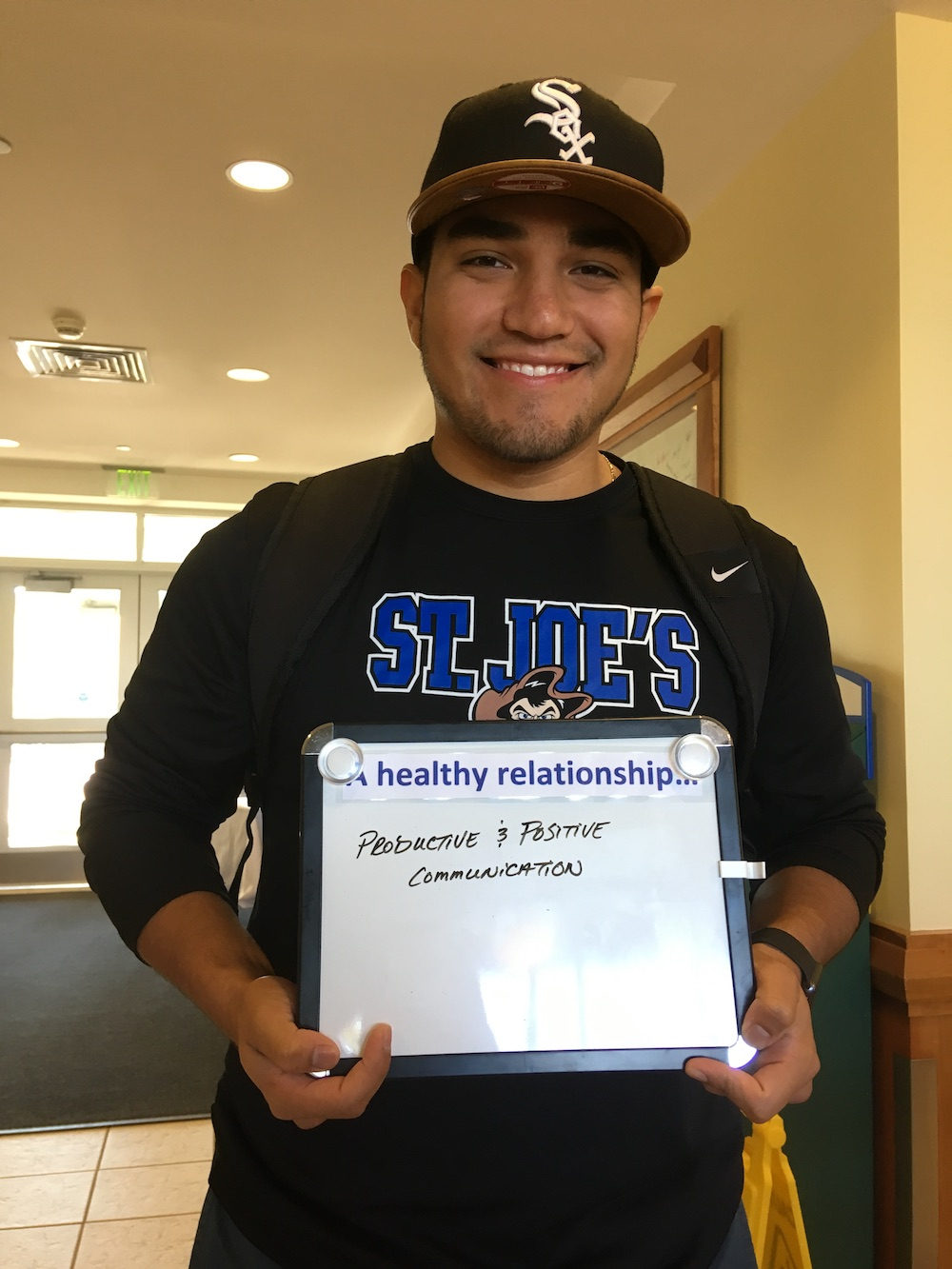
October is National Domestic Violence Awareness Month. The Residence Life Team invited students to pledge their support to stand up to domestic and dating violence on a poster, and— like Alex Gutierrez ‘19 shown here—to share their own interpretations of what a healthy relationship looks like to them. Photo: courtesy Christine LeMoult.
The grant-funded programming plans to provide all members of the College community–students, faculty, and staff alike–with skills to recognize, intervene, prevent, and report all forms of sexual violence. Against the backdrop of a long history where sexual assault is a taboo topic, the DOJ programming also educates community members on how to practice the effective measures for preventing sexual violence and how to become more skilled at discussing issues related to sexual assault.
This latter goal–developing the skills to discuss the issue while remaining grounded in knowledge and civility–couldn’t be more timely. Over the past year, the #metoo movement nationwide has disrupted at least some of the silence surrounding this social epidemic of violence, particularly in the workplace. Allegations and convictions of sexual violence have rocked the high-profile worlds of sports, entertainment, religion, media, and government, to name a few, bringing unprecedented media attention to the issue. Regardless of how one feels about the nature of or the outcome of the recent Supreme Court hearings, what is clear is that the issue of sexual assault became entangled in partisan feuding on a national stage and threatened to divert the conversation away from the statistical realities that are only now garnering widespread attention.
“With the Department of Justice funding, Saint Joseph’s College is positioned to make an important contribution,” said President Jim Dlugos. “Sexual misconduct is a public health issue and a social justice issue. The call to action is clear. As a higher education institution, we can help educate our students about the need for and nuances of consent, about warning signs and how to intervene as a bystander, and about how to support our fellow community members in a time of need.”
A number of College academic programs already address the social causes and impacts of violence, including: criminal justice, sociology, history, political science, and nursing. With the new funding, the entire community will experience training, in partnership with Through These Doors (formerly Family Crisis Services of Maine) and the Cumberland County Sheriff’s Office.
Many students feel strongly about the need to increase public awareness of the national statistics on sexual violence, so much so that they participated in a class walkout. One of the students, Nora Laprise ’22, said, “Violence against women is a huge problem in today’s society and it needs to be recognized so that we can help prevent it. For some people, it may come across as a sensitive subject, but the only way for us to change is to educate ourselves. We need to recognize that the person who inflicted this violence is wrong. If we all stand strong together as a community—as women, and as people in general—and educate everyone on the effects of the violence, then maybe we can completely prevent violence against women.”
1Smith, S.G. et al. (2017). The National Intimate Partner and Sexual Violence Survey (NISVS): 2010-2012 State Report. Atlanta, GA: National Center for Injury Prevention and Control, Centers for Disease Control and Prevention. Retrieved from the CDC Centers for Disease Control and Prevention https://www.cdc.gov/violenceprevention/pdf/NISVS-StateReportBook.pdf
2Rennison, C. M. (2002). Rape and sexual assault: Reporting to police and medical attention, 1992-2000 (NCJ 194530). Retrieved from the U.S. Department of Justice, Office of Justice Programs, Bureau of Justice Statistics: http://bjs.ojp.usdoj.gov/content/pub/pdf/rsarp00.pdf
3Sexual Misconduct is a broad term that encompasses Sexual Assault, Sexual Exploitation, Non Consensual Sexual Intercourse, Forced Sexual Intercourse, Stalking, Intimate Relationship Violence, Domestic Violence and Sexual Harassment. Sexual Misconduct may vary in its severity and consists of a range of behaviors or attempted behaviors. Sexual Misconduct violates federal and state civil rights laws and may be subject to criminal prosecution in addition to action taken by the College.
4The Clery Act requires annual reporting of statistics for various criminal offenses, including forcible and non-forcible sex offenses and aggravated assault. In compliance with the Jeanne Clery Disclosure of Campus Security Policy and Campus Crime Statistics Act, the College publishes an Annual Safety and Security Report containing statistics of specified crimes, arrests and disciplinary referrals.
All Sisters of Mercy trace their roots back 175 years to founder Catherine McAuley, an Irish Catholic laywoman.
 Spending her inheritance, Catherine McAuley opened the House of Mercy on Lower Baggot Street in Dublin, Ireland on September 24, 1827, a place to shelter and educate people–especially “distressed” women and girls–who were poor, sick and uneducated. Recognizing the importance of her work, the Archbishop of Dublin advised McAuley to establish a religious congregation; in 1831, Catherine and two companions became the first Sisters of Mercy. Their order spread quickly throughout Ireland and England. Then in 1843, invited by the Bishop of Pittsburgh, Mother Frances Xavier Warde and six other Sisters of Mercy from Ireland arrived in the United States. By 1854, sisters from Ireland had also settled in New York City, Chicago, Little Rock, and San Francisco, establishing schools and hospitals. Today, more than 2,900 Sisters of Mercy of the Americas devote their lives to serving those in need in North, South, and Central America, the Caribbean, Guam, and the Philippines.
Spending her inheritance, Catherine McAuley opened the House of Mercy on Lower Baggot Street in Dublin, Ireland on September 24, 1827, a place to shelter and educate people–especially “distressed” women and girls–who were poor, sick and uneducated. Recognizing the importance of her work, the Archbishop of Dublin advised McAuley to establish a religious congregation; in 1831, Catherine and two companions became the first Sisters of Mercy. Their order spread quickly throughout Ireland and England. Then in 1843, invited by the Bishop of Pittsburgh, Mother Frances Xavier Warde and six other Sisters of Mercy from Ireland arrived in the United States. By 1854, sisters from Ireland had also settled in New York City, Chicago, Little Rock, and San Francisco, establishing schools and hospitals. Today, more than 2,900 Sisters of Mercy of the Americas devote their lives to serving those in need in North, South, and Central America, the Caribbean, Guam, and the Philippines.
